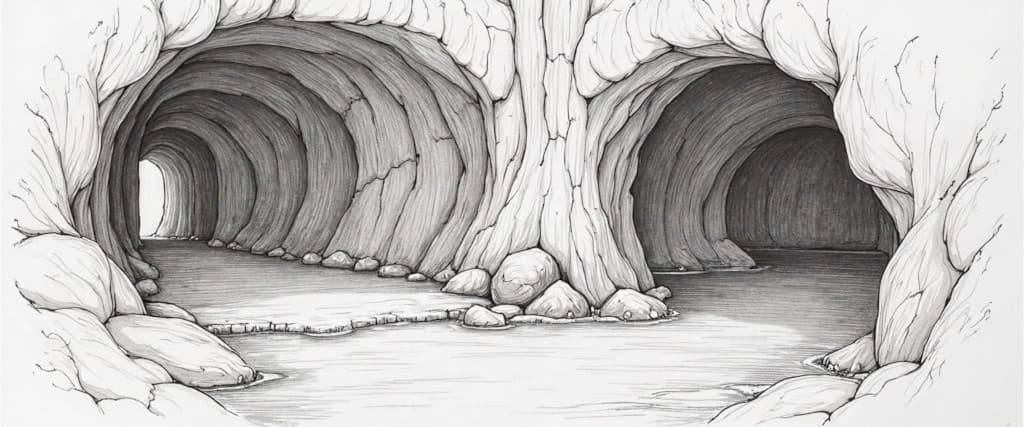Is it possible to find a hidden cave without even going underground? Some explorers say yes — and they’re not talking about high-tech sensors or multi-million-dollar expeditions. Instead, they’re using a method once employed to investigate the pyramids, map sunken cities, and locate unknown tunnels. It’s called remote viewing. We recently got hooked on this.
If you’re curious to try it, to train remote viewing, we recommend Verevio — an app for psychic abilities development. iPhone users can find it in the App Store, and Android owners in Google Play. We, for example, noticed our first results after just a few months of training. One of the advantages is that, unlike most practices that require a partner, here you can train on your own, whenever it’s convenient for you.
For cave researchers, the potential is hard to ignore. Traditional expeditions carry serious risks — cave-ins, toxic gases, logistical challenges, and significant costs. Remote searching, on the other hand, allows you to “scan” an area, get hints about possible entrances or secret chambers. Of course, it’s not something you can master overnight. You first need to train your brain — sharpening observation, intuition, and attention to detail. In fact, some people even manage to make discoveries this way — finding secret chambers and tunnels.
How It Works
Here’s how it works. There are several remote viewing protocols, but we’ll focus on the most popular one — Coordinate Remote Viewing (CRV). You can also check out plenty of videos online to see it in action and reinforce your understanding. Sessions usually last 20–30 minutes, which is long enough to maintain focus without fatigue.
Note: Classical CRV usually requires a partner. If you don’t have one, we recommend using Verevio that’s set up for solo practice, with everything prepared for you.
0. Preparation
One of you should prepare a set of unknown cave targets in advance. These can be photographs, objects, or coordinates. Focus your intention on perceiving the target. Have a pen and paper ready. Anything that comes to mind — thoughts, sketches, shapes — should be recorded however feels right.
1. First Impressions & Ideogram
Now start by paying attention to your initial impressions of the target. Sketch an ideogram, a simple mark representing the target’s basic “energy”. For example, most caves appear natural, though some, like the artificial caves in China, are manmade.
2. Sensory Impressions
Record all sensory data: shapes, colors, textures, movement, temperature, sounds, or smells.
It’s important to notice subtle details, even if they seem minor at first. For example, when perceiving a cave, an experienced viewer might pick up on whether the walls are rocky or smooth, whether the air is dry or humid, or if there is water dripping or a stream inside.
Paying attention to these finer points helps you later evaluate how accurately you perceived the target. The more specific your impressions, the easier it is to compare them with the actual target.

3. Structural Details
Refine your impressions by focusing on dimensions, layout, and proportions. Try to capture the target’s overall shape and how different parts relate to each other. Draw maps, diagrams, or sketches to represent the structure of the target. You can explore it from any perspective — from above, from the side, or even as if moving around it. Imagine flying over it, walking through it, or looking at it from unusual angles.
4. Analytical Overlay (AO)
Be aware that your conscious mind will often try to “fill in the blanks” or guess the target. These analytic or logical thoughts are called AO (Analytical Overlay). Separating AO from your pure perception is a key skill in remote viewing — but it’s not easy, and it takes practice.
This skill is not for everyone at first. Beginners usually find it challenging to tell the difference between true impressions and guesses. To develop this ability, start with simple exercises:
- Decide whether a target is living or non-living.
- Determine if it is dark or light inside.
- Identify basic shapes or locations, such as inside a cave or outside.
These simple exercises help train your mind to notice pure sensory impressions without automatically interpreting or rationalizing them. Over time, as you gain experience, you’ll be able to better recognize AO in more complex targets like tunnels, buildings, or natural landscapes.
5. Feedback & Practice
After your session, compare your notes, sketches, and impressions with the actual target. Look carefully at what you got right and what you missed. Pay attention to both major features and subtle details. This step helps you see patterns in your accuracy and understand how your mind interprets different types of targets.
With enough practice, you can start applying this during expeditions — for example, sketching tunnels or caves you haven’t visited yet and checking your impressions on-site later.